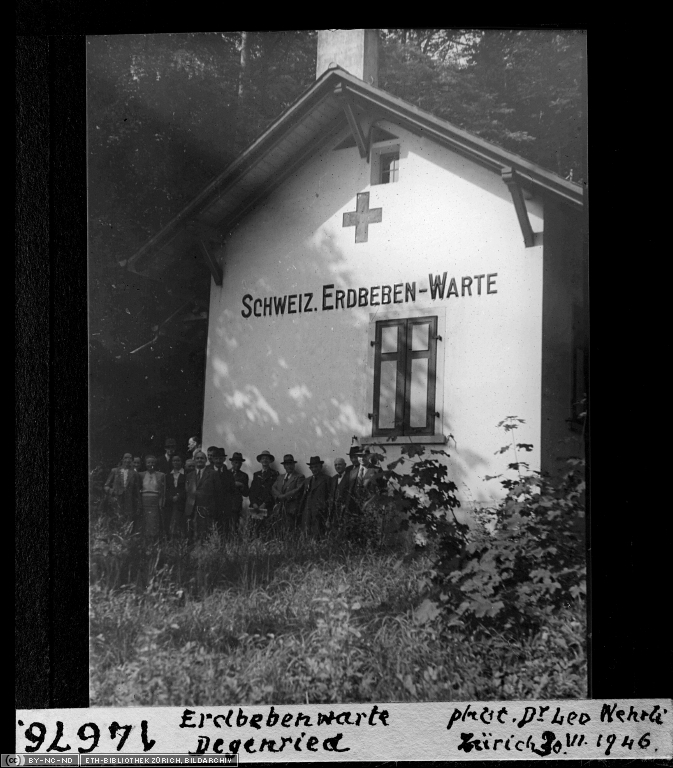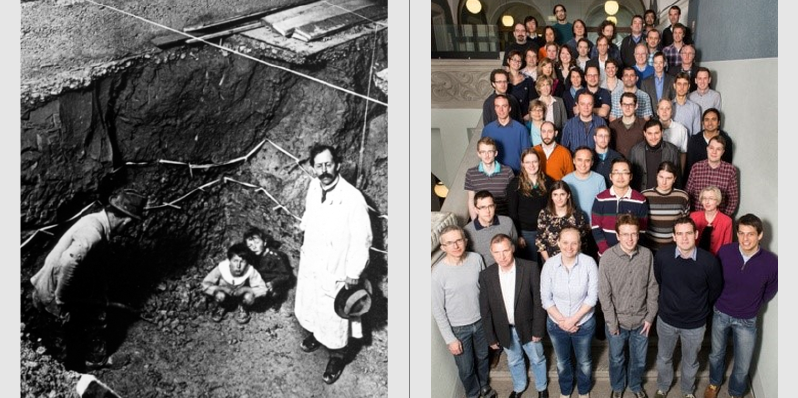100 Year Swiss Seismological Service
The Swiss Seismological Service (SED) has been recording earthquake signals for 100 years. During this period, it has registered around 13,100 tremors caused by local earthquakes. During its jubilee year, the Swiss Seismological Service is providing insights into its past, present, and future activities.

With the anchoring of earthquake monitoring in a federal act in 1914, the SED became the official federal agency for earthquake monitoring. The SED followed in the footsteps of the Swiss Earthquake Commission, which was established in 1878 as the first permanent agency for earthquake monitoring in the world. At the latest with the installation of the first Swiss earthquake monitoring station in Degenried near Zurich in 1911, the Commission organised on a voluntary basis reached its personnel and organisational limits. The Swiss Confederation thus transformed the national seismic service into a professional institution that is attached to ETH Zurich today.
The SED today
The SED has remained true to its core task, the seismic monitoring of Switzerland and its neighboring countries, since it was founded 100 years ago. What began in 1914 with just one seismic station is handled today by more than 100 stations spread over Switzerland, which make up the seismic network. Of the nearly 13,100 earthquakes recorded, around 1,600 could be felt by people.
Today, the SED not only assesses the seismic hazard in Switzerland but is also active in research and teaching. It makes the newly acquired findings available to the general public, the media, and public authorities and provides in-depth information on current seismological events. In addition, the SED offers extensive services to third parties, for instance in the context of seismic monitoring of industrial projects such as geothermal drillings. The Swiss Seismological Service also takes on national tasks like the scientific contribution to the monitoring of the Comprehensive Nuclear-Test-Ban Treaty.
Using in-depth knowledge to afford better protection
In Switzerland, earthquakes are the natural hazard with the highest damage potential. However, they cannot currently be predicted or prevented. Cooperation with ETH Zurich and, more particularly, the Department of Earth Sciences enables the Swiss Seismological Service to engage in research on the highest international level. Thanks to the combination of PR-related services and groundbreaking research projects, the SED makes a decisive contribution to extending knowledge about this natural hazard. In-depth knowledge of this kind is essential in order to afford the public even better protection against the impact of a quake.
Monthly impressions of the anniversary year
During its anniversary year, the SED is providing insights into its past, present, and future activities. Exceptional impressions from its various areas of activity are posted in the Snapshots section of the website of the Swiss Seismological Service every month. A anniversary exhibition and an open house in the fall of 2014 are another opportunity to gain a firsthand impression of the Swiss Seismological Service.
The Swiss Seismological Service at ETH Zurich
The Swiss Seismological Service (SED) at ETH Zurich is the official federal agency for earthquake monitoring. The SED monitors earthquake activity in Switzerland and its neighboring countries and assesses Switzerland’s seismic hazard. When an earthquake happens, the Swiss Seismological Service informs the public, the authorities, and the media about the earthquake’s location, magnitude, and possible consequences.

